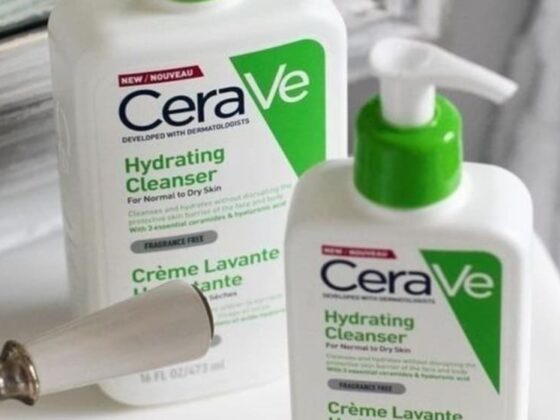We all want that clear, radiant skin that makes us feel like we’re on top of the world, right? But acne, those pesky little blemishes, can sometimes get in the way of our skincare dreams. Enter salicylic acid serum, your secret weapon for achieving acne-free, flawless skin. In this blog, we’re going to break down everything you need to know about this magical elixir, from why you should consider it to debunking common myths and how to make the most of it. Let’s dive in!
Why Should You Consider a Salicylic Acid Serum? 5 Compelling Reasons
Acne has a way of making us feel self-conscious, but you don’t have to let it hold you back. Here are five rock-solid reasons why you should give salicylic acid serum a place in your skincare routine:
- Banishes Acne and Breakouts: Salicylic acid is the superhero when it comes to acne-fighting. It penetrates deep into your pores, unclogs them, and exfoliates the dead skin cells, which are often the culprits behind breakouts.
- Prevents Future Breakouts: Salicylic acid doesn’t just tackle current acne; it also works as a preventive measure. Regular use keeps your pores clear, reducing the chances of new pimples popping up.
- Exfoliates Gently: Unlike abrasive scrubs that can irritate your skin, salicylic acid provides gentle exfoliation. It sloughs off dead skin cells, leaving your skin brighter and smoother.
- Shrinks Pores: Large pores making you unhappy? Salicylic acid can help. It unclogs your pores, making them appear smaller and less noticeable.
- Fights Inflammation: Acne often brings along redness and inflammation. Salicylic acid has anti-inflammatory properties that can help soothe your skin and reduce redness.
How to Choose the Right Salicylic Acid Serum for Your Skin
Now that you’re all excited about trying salicylic acid serum, it’s crucial to pick the right one for your skin type. Here’s what to look for:
- Concentration: Salicylic acid serums come in various concentrations, typically 0.5% to 2%. If you’re new to salicylic acid, start with a lower concentration and gradually move up if needed. Sensitive skin usually benefits from lower concentrations.
- Additional Ingredients: Check the serum’s ingredient list. Look for soothing ingredients like aloe vera, green tea extract, or niacinamide, which can help counteract potential dryness or irritation.
- Skin Type: Consider your skin type. If you have oily or acne-prone skin, you may want a gel-based serum. Dry skin types can opt for a more hydrating formula.
- pH Level: Ideally, a good salicylic acid serum should have a pH level of around 3. Some may come with added pH adjusters to enhance effectiveness.
- Avoid Harsh Additives: Be cautious of serums that contain alcohol, fragrances, or too many potentially irritating ingredients.

The Ordinary Salicylic Acid Serum
The 3-Step Guide to Achieving Flawless Skin with Salicylic Acid Serum
So, you’ve got your hands on a salicylic acid serum, and you’re ready to roll? Here’s a simple 3-step guide to get you started:
Step 1: Cleanse Thoroughly – Begin by washing your face with a gentle cleanser. This ensures your skin is free of dirt and makeup, allowing the serum to penetrate more effectively.
Step 2: Apply the Serum – After cleansing, apply a small amount of the salicylic acid serum to your face. Start with every other day if you’re new to salicylic acid to give your skin time to adjust. Over time, you can increase the frequency.
Step 3: Moisturize & Protect – Once the serum has dried (usually in about 5-10 minutes), apply your regular moisturizer and don’t forget your sunscreen in the morning. Salicylic acid can make your skin more sensitive to the sun, so sun protection is crucial.
5 Common Myths About Salicylic Acid Serum Debunked
Let’s bust some myths, shall we? There are a few misconceptions about salicylic acid that need to be addressed:
Myth 1: Salicylic Acid Dries Out Your Skin – While it can be drying if used excessively, salicylic acid in the right concentration can actually be hydrating, especially when paired with a good moisturizer.
Myth 2: Salicylic Acid Causes Dark Spots – Quite the opposite. Salicylic acid helps to reduce hyperpigmentation, which can lead to dark spots. It’s a handy tool for fading post-acne marks.
Myth 3: Salicylic Acid Doesn’t Work on Blackheads – False! Salicylic acid is particularly effective in treating blackheads. It gets into your pores and breaks down the gunk, helping to clear them up.
Myth 4: Salicylic Acid Is Only for Acne-Prone Skin – Not true. It can benefit all skin types, as it also offers exfoliation, which is fantastic for anti-ageing and maintaining smooth skin.
Myth 5: Salicylic Acid and Vitamin C Don’t Mix – They can actually work well together. However, if you’re new to both, you might want to introduce them into your routine separately to avoid irritation.

Minimalist Salicylic Acid Serum
Is a 2% or 3% Salicylic Acid Serum More Effective? Find Out
Choosing the right concentration of salicylic acid serum is not a one-size-fits-all decision. It depends on your skin type and the specific skin issues you want to target. A 2% salicylic acid serum is an excellent starting point for most individuals. It effectively treats acne and clogged pores without being overly harsh, making it a safer choice for those with sensitive skin. On the other hand, a 3% salicylic acid serum is more potent and suitable for individuals dealing with stubborn acne or those with thicker skin. While it can work faster, it may also be more drying, so it’s essential to complement it with a good moisturizer. The key here is to initiate your salicylic acid journey with a lower concentration and gradually progress as needed. Finding the right concentration that suits your skin may require a bit of trial and error.
What Happens to Your Skin After 30 Days of Using Salicylic Acid Serum?
Using salicylic acid serum consistently over a month can lead to some remarkable changes in your skin:
- Clearer Complexion: You’ll notice fewer breakouts and existing acne will gradually diminish. Your pores will also look smaller and less noticeable.
- Reduced Inflammation: Any redness or irritation will subside, giving your skin a calmer, more even tone.
- Improved Texture: Your skin will feel smoother and softer, thanks to the gentle exfoliation effect of salicylic acid.
- Less Oily Skin: For those with oily skin, salicylic acid can help regulate oil production, leaving your skin less greasy.
- Fading Scars and Marks: Over time, you’ll notice post-acne scars and dark spots fading, resulting in a more even complexion.
- Prevention: Regular use will continue to prevent new breakouts from occurring.
Remember, consistency is key. It’s essential to keep up your salicylic acid routine to maintain these positive changes.
Top 7 Salicylic Acid Serums Available in the Indian Market
Now that you’re all geared up to introduce salicylic acid serum into your skincare routine, you might be wondering which ones to consider. We’ve done the homework for you, so here are the top 7 salicylic acid serums available in the Indian market:
1. Neutrogena Oil-Free Acne Face Wash: A popular choice that combines cle1ansing and salicylic acid treatment. It’s suitable for daily use and helps in preventing breakouts.
2. The Ordinary Salicylic Acid 2% Solution: Known for its simplicity and effectiveness, this budget-friendly option provides targeted treatment for acne and blemishes.
3. Plum Green Tea Mattifying Moisturizer: An excellent option for those with combination or oily skin. It combines the benefits of green tea with salicylic acid to control acne and oil.
4. Biotique Bio Winter Green Spot-Correcting Anti-Acne Cream: This Ayurvedic formulation blends wintergreen oil with salicylic acid to combat acne, while also being gentle on the skin.
5. Kaya Skin Clinic Acne Free Purifying Cleanser: Kaya’s offering is a blend of salicylic acid and glycolic acid, making it an effective choice for deep cleansing and exfoliation.
6. Lotus Professional Phyto-Rx Clarifying Pimples and Acne Crème: A herbal alternative, this product combines salicylic acid with natural ingredients to target acne and clarify the skin.
7. Paula’s Choice Skin Perfecting 2% BHA Liquid Exfoliant: This global favourite is now available in India. It offers an effective 2% salicylic acid solution for smooth, radiant skin.
Remember, what works best for your skin can vary. Start with a patch test, and introduce these products gradually into your skincare routine. Additionally, consulting a dermatologist is always a good idea, especially if you have severe acne concerns. Enjoy your journey to acne-free, beautiful skin.

The Derma Co Salicylic Acid Face Serum
Salicylic Acid Serum vs. Glycolic Acid Serum: A Face-Off
Both salicylic acid and glycolic acid are potent skincare ingredients, but they serve different purposes. Let’s put them head-to-head:
Salicylic Acid Serum:
- Best for acne-prone and oily skin.
- Gets deep into pores to unclog and exfoliate.
- Fights inflammation and reduces redness.
- Treats blackheads effectively.
Glycolic Acid Serum:
- Suitable for most skin types, except very sensitive skin.
- Provides surface exfoliation, making it great for texture and fine lines.
- Can improve dull skin and fade hyperpigmentation.
- Less effective for deep, cystic acne.
The choice between the two depends on your skin concerns. Some even use both, applying glycolic acid at night and salicylic acid in the morning, but this approach may not be suitable for all skin types.
7 Mistakes to Avoid When Applying Salicylic Acid Serum
While using salicylic acid serum can work wonders for your skin, there are some common mistakes you should steer clear of:
- Overusing: Start slow, and don’t rush into using it every day. Your skin needs time to adjust.
- Skipping Sunscreen: Salicylic acid can make your skin more sensitive to the sun. Skipping sunscreen is a big no-no.
- Mixing with Incompatible Ingredients: Be cautious when layering products. Combining salicylic acid with certain other active ingredients can lead to irritation.
- Applying on Broken or Irritated Skin: Avoid using salicylic acid on open wounds or irritated areas.
- Using During Pregnancy: Pregnant or nursing? It’s best to avoid salicylic acid unless approved by your healthcare provider.
- Not Moisturizing: Don’t forget to follow up with a good moisturizer to prevent dryness.
- Giving Up Too Soon: Results may take time. Be patient and consistent with your routine.
In conclusion, salicylic acid serum can be your holy grail for acne-free, radiant skin. However, it’s essential to use it correctly and find the right product for your skin type. By understanding the science behind salicylic acid, debunking common myths, and avoiding common mistakes, you’ll be well on your way to achieving the clear, flawless complexion you’ve been dreaming of. Say hello to your new skincare secret weapon.
Love,
Team LadyInRoseGold



















